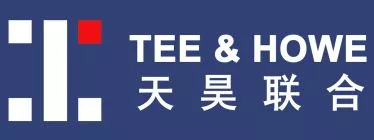- within Technology topic(s)
- with Inhouse Counsel
- with readers working within the Pharmaceuticals & BioTech and Retail & Leisure industries
Thanks to the heads-up from Aaron Wininger of Schwegman Lundberg & Woessner, P.A. , the China State Administration for Market Regulation SAMR announced on 25 April 2025 another draft trade secret protection provision at the link below:
https://www.samr.gov.cn/hd/zjdc/art/2025/art_0eb6d32af2e3486e98a8543d5447a314.html
The deadline to comment is 25 May 2025. This provision has an earlier draft in 2020 at the link below:
https://www.moj.gov.cn/pub/sfbgw/lfyjzj/lflfyjzj/202009/t20200903_150818.html
Comparing with the 2020 draft, the current 2025 draft has many revisions, in my view making the provisions clearer and more concise, but of course there are still issues remain, and new issues arise.
Many IPO's suggestions have been adopted
The Intellectual Property Owners Association (IPO) provided comments to the 2020 draft. It is encouraging to see that the IPO comments got into the current 2025 draft on many points as below:
Better clarity on the liability due to assistance on breaching trade secret
This was in articles 3, 11, 13, 14 and 16 of the 2020 draft. The IPO comments was to introduce the "know or should have known" requirement to trigger such liabilities.
In the 2025 draft, these all boil down to article 20 with the "know or should have known" requirement introduced.
Improved definition of technical information of trade secret
The changes proposed by the IPO on article 5 of the 2020 draft have basically all been adopted in article 4 of the 2025 draft.
Partially adopted definition of trade secret
Both the 2020 and 2025 drafts have this in article 6. The following changes proposed by the IPO have been adopted in the 2025 draft:
- The trade secret is not generally known or readily accessible (to the relevant field).
- Deletion of the requirement "The information is easily obtained without paying a certain price or can be obtained from other public channels".
However, the proposed deletion of "Only relevant content such as product size, structure, simple combination of components, etc." was not adopted.
Total removal of article regarding the ownership rights
This was in article 10 of the 2020 draft. This has been deleted in the 2025 draft.
Deletion of former employee's self-knowledge, experience and skills
In the 2020 draft article 15, the use of self-knowledge, experience and skills of a former employee may be excluded from trade secret. The IPO suggested deleting this, and this has indeed been deleted in the 2025 draft.
Acquisition of clients by ex-employee
The 2020 draft had quite specific definition and requirement on this, making it difficult for the right holder to prove. The 2025 draft is drastically different by shifting the burden of proof to the ex-employee in article 5, requiring proof that the client voluntarily chooses to work with the ex-employee to ascertain that the ex-employee did not use improper means to access client's information from the ex-employer.
Exemptions from infringement
While most of the suggestions to the 2020 draft article 19 from the IPO were not adopted, the 2025 draft article 20 does have one adaptation, specifically exemption due to reporting illegal criminal activities. However, this article 20 of the 2025 draft has the following issues:
- Two additional causes of "maintaining national security" and "needs of social public interest" are added (in addition to reporting illegal criminal activities). This could become open revolving doors for legally exposing trade secrets due to the potential broad interpretation of national security and public interest. The same concerns were in IPO comments on article 37 of the 2020 draft.
- These exemptions, in particular those due to reporting illegal criminal activities, do not require "disclosed in confidence" as suggested by the IPO.
Evidence involving computer software programs
The IPO's suggestions to article 23 of the 2020 draft were all adopted in article 26 of the 2025 draft.
Confiscation of evidence involving computer software program
While the IPO's comments on article 25 of the 2020 draft were not adopted, article 28 of the 2025 draft stipulates that evidence could be confiscated when such could not be extracted on-site.
Reduction of infringement amount to be recognized as serious case
The IPO suggestion to article 31 of the 2020 draft to reduce to RMB300k (in line with the China Supreme People's court judicial interpretation 2020) has been adopted in article 35 of the 2025 draft.
Removal of article regarding misappropriation out of goodwill
Article 33 in the 2020 draft has been deleted in the 2025 draft, in line with the suggestion from the IPO.
Calculation of damages due to infringement
While most of the suggestions from the IPO to article 35 of the 2020 draft were not adopted, one suggestion does get into article 38 of the 2025 draft, specifically "Where it is difficult to determine the total amount of sales reduction caused by the infringement and the reasonable profit of each product of the right holder, the product of the sales volume of the infringing product multiplied by the reasonable profit of each infringing product shall be used to determine the amount of the infringing product."
Remaining and new issues
While the 2025 draft has many good changes (thanks to the IPO), the following issues remain, with additional issues:
Definition of trade secret
Article 6, "Only relevant content such as product size, structure, simple combination of components, etc." remains.
Exemptions from infringement
Article 20, points 1) and 2) above
No consideration of acceleration due to trade secret
The IPO's comment on articles 13 (for definition of use of trade secret) and 34 (for damage calculation) in the 2020 draft were not adopted.
Jurisdiction
The IPO's comments to raise the level of SAMR branch handling trade secret cases from county level to provincial level were not adopted (article 20 in the 2020 draft, article 22 in the 2025 draft). Further, it is unclear in article 22 in the 2025 draft which jurisdiction prevails, the place where the infringement occurs, or the residence of the right holder.
Appraisal agency
The IPO's following comments on article 22 of the 2020 draft were not adopted in article 25 of the 2025 draft:
- Independent requirement.
- Confidentiality requirements on the appraisal agency. Although confidentiality requirements on government bodies and staff including the SAMR are stipulated in article 33 in the 2025 draft, these do not explicitly translate that the appraisal agency is also bound by this article 33.
Handling of patent applications from infringement of trade secret
The relevant article 30 appears to be new in the 2025 draft. While this article stipulates that the SAMR can (only can) inform the CNIPA of the administrative penalty results, and the right holder can sue for compensation, this article does not specify that the right holder has the right to dispose such patent applications, like requesting assignment back to the right holder. I suggest specifying the rights of the right holder to dispose relevant patent rights, and also specifying that granted patents are also included.
My two cents. As always, any comments and thoughts are welcomed.
The content of this article is intended to provide a general guide to the subject matter. Specialist advice should be sought about your specific circumstances.


